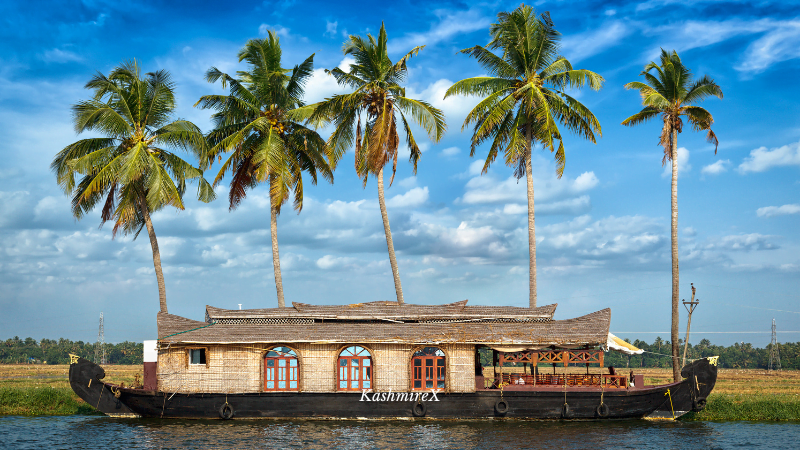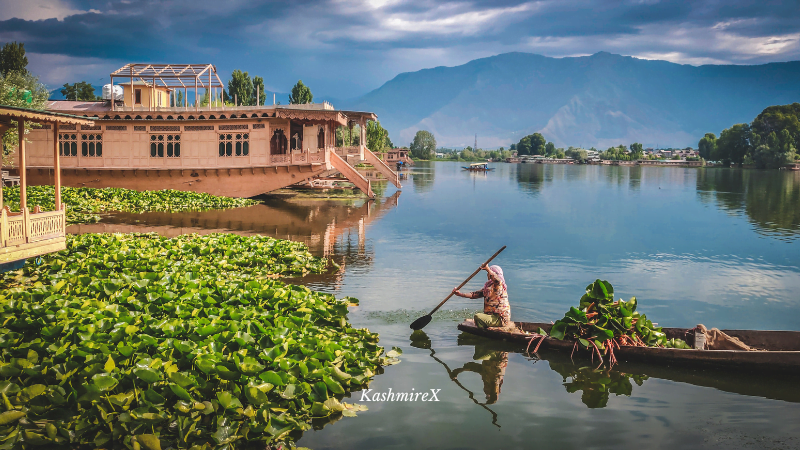Welcome aboard as we explore the delightful world of houseboats in Kerala and Kashmir. Let’s break down the differences in a way that’s easy to grasp.
Choosing Your Houseboat Adventure: Kerala vs. Kashmir
1. Where are the houseboat Located:
- Kerala: Picture floating through peaceful backwaters, surrounded by greenery.
- Kashmir: Imagine staying on a houseboat anchored in the breathtaking Dal Lake, embraced by the Himalayas.
Kerala's Kettuvallams: Weaving Nature into Floating Art

Crossing over to the snow-kissed landscapes of Kashmir, houseboats here are more than mere water vessels – they are symphonies carved in cedar wood.
Materials Used:
- Cedar Wood: Known for its durability and natural resistance to decay.
- Walnut Wood: Intricately carved for detailing, adding a touch of elegance.
Construction Process:
- Selection of Wood: High-quality cedar and walnut wood are chosen for their strength and aesthetic appeal.
- Carving Details: Artisans meticulously carve intricate designs, often inspired by Victorian and Turkish influences.
- Interior Elegance: Cedar paneling, hand-carved ceilings, and Victorian-inspired woodwork adorn the interiors
In the sun-kissed state of Kerala, the magic begins with Kettuvallams, traditional boats transformed into cozy abodes. Craftsmen skillfully weave nature’s bounty into these floating masterpieces.
Materials Used:
- Bamboo: Providing the framework for the boat’s structure.
- Coir: Used for tying wooden planks together, ensuring a sturdy and eco-friendly construction.
- Wood: Carved with precision to fashion the boat’s body, including the thatched roof made from coconut leaves.
Construction Process:
- Framework: Bamboo forms the skeleton, creating the boat’s shape.
- Wooden Planks: Coir ropes intricately tie wooden planks, forming the boat’s body.
- Thatched Roof: Crafted from coconut leaves, the roof adds a rustic charm while providing shade.
Kashmir's Cedar Elegance: A Symphony in Wood

Crossing over to the snow-kissed landscapes of Kashmir, houseboats here are more than mere water vessels – they are symphonies carved in cedar wood.
Materials Used:
- Cedar Wood: Known for its durability and natural resistance to decay.
- Walnut Wood: Intricately carved for detailing, adding a touch of elegance.
Construction Process:
- Selection of Wood: High-quality cedar and walnut wood are chosen for their strength and aesthetic appeal.
- Carving Details: Artisans meticulously carve intricate designs, often inspired by Victorian and Turkish influences.
- Interior Elegance: Cedar paneling, hand-carved ceilings, and Victorian-inspired woodwork adorn the interiors
Common Thread: Skillful Artisans and Generations of Know-How
Whether on the backwaters of Kerala or the serene Dal Lake in Kashmir, both regions share a common thread – skilled artisans who have honed their craft through generations. Passed down from father to son, this age-old knowledge ensures that each houseboat is not just a vessel but a piece of art.
Culmination of Craftsmanship:
- Kerala: Kettuvallams reflect the simplicity and harmony of Kerala’s lifestyle, with local artisans infusing their cultural essence into every creation.
- Kashmir: Houseboats stand as a testament to the region’s rich cultural history, with intricate wood carvings telling tales of Kashmiri heritage.
Conclusion
As you sail through the tranquil waters of Kerala and Kashmir, take a moment to appreciate the craftsmanship beneath your feet. Whether it’s the coir-woven elegance of Kettuvallams or the cedar symphonies of Kashmiri houseboats, each plank and carve narrates a story of dedication and love for the art of houseboat crafting.
Bon voyage into the heart of craftsmanship, where every wave carries the echoes of skilled hands shaping dreams into floating reality.



